Link
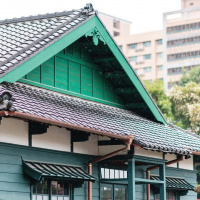
Home Village
The predecessor of Home Village was the Combined Service Forces Communication Repair Factory. In 1956, the factory buildings were repurposed and renovated into residential accommodations for dependents of military personnel, officially becoming a military dependents’ village.
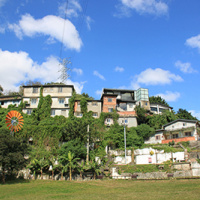
Treasure Hill Artist Village
As the first illegal settlement managed with the vision of “living preservation,” the Treasure Hill Artist Village includes several houses built during the self-built period between the 60s and 80s. Some of the houses are still occupied by the original residents, resulting in the unique symbiosis of artists and residents. This cultural heritage, which was able to be preserved due to resistance and the process of transforming a historical site into a creative one has made Treasure Hill Artist Village a place where people from all over the world come for inspiration and ideas.
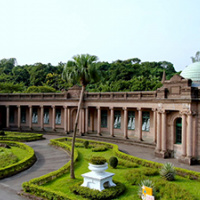
Taipei Water Park
Taipei Water Park is located south of the Taipei Basin and at the heart of the Gongguan Shopping District. The park is approximately 20 hectares big and is surrounded by nature and is in charge of the water supply of Taipei. Situated within the park are four historical sites: the Pumping Room (Taipei Water Park), the Guanyinshan reservoir, the water metering room, and the “Taipei Water Source Site ,” which was named a historical site by the Taipei City Government and includes raw water pumping stations built post-war.

Taipei City Hakka Cultural Park
The Hakka Cultural Park is 4.03 hectares big and focuses on six major themes: culture, nature, education, technology, industry, and agriculture. The Hakka Cultural Park is designed to include water and traits of Hakka culture. The park aims to preserve the cultural legacy and promote Hakka culture, connecting with cultural resources and featuring contemporary Hakka characteristics in an effort to shape a new Hakka Village of Taipei City.

Kishu An Forest of Literature
The historical Kishu An Forest of Literature was a Japanese restaurant during Japanese Rule and was repurposed as an accommodation for public servants and school teachers after the war. With the mission of “connecting the classics with the contemporary” and “networking between regions,” the Kishu An Forest of Literature continues to serve as an advocate for literature, organizes interdisciplinary events, and approaches literature through different mediums. The Kishu An Forest of Literature combs through regional history and encourages a sense of identity through writing/reading/creating, which has made South Taipei a model for interdisciplinary cultural groups.
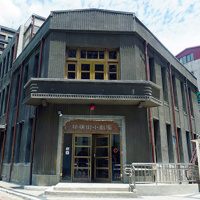
Guling Street Avant-garde Theatre
The Guling Street Avant-garde Theatre was built in 1906 and was a wood-built accommodation for officials during Japanese Rule. The building was reconstructed into the Taipei City Police Station Zhongzheng 7th Precinct after the war, and remodelings to transform it into a three-story building were completed in 1954. In 1993, the building was renamed the Zhongzheng 2nd Precinct, and the “Zhongzheng 2nd Precinct Experimental Theatre” opened to the public in 1998. The building was renamed Guling Street Avant-garde Theatre in 2001 and is currently the only public performance venue positioned as an avant-garde space in Taiwan.

Wistaria Tea House
The historic Wistaria Tea House was the accommodation for high officials during Japanese Rule and became the accommodation of renowned economist Mr. David Chow after the 1950s; it was also a gathering space for liberal academics. Figures such as Yin Hai-Kuang, Chang Fo-Chuan, Hsia Tao-Ping, Li Ao, and Chen Guu-ying often gathered in this space to discuss social affairs at the time, making the venue a place where freedom of speech was valued.
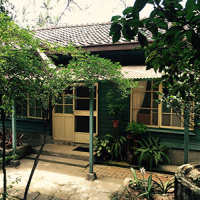
Yin Hai-Kuang’s Residence
Yin Hai-Kuang lived a life that upheld the principle, “I would rather die from speech than live in silence.” Yin was courageous when facing authorities and did not hold back his criticism of politics, and became an inspiration for academics and shaped social conscience. He was a major advocate for Liberalism. The building includes preservational values connected with figures of significance, and the space has witnessed the historical traces of intellectuals participating in democratic movements. The surroundings of Yin Hai-Kuang’s Residence also show the setting where intellectuals criticized politics.

Wen-Luo-Ting Region Independent Bookstores
The “Wen-Luo-Ting” region is one of the few high-density bookstore clusters in the mandarin-speaking world. Within proximity to universities, the bookstores in the area focus on niche publications and those that feature freedom and independence. The experiences of the Wen-Luo-Ting Region have led to a cultural setting that no other Mandarin-speaking cities can compare with. Over the years, the Wen-Luo-Ting Region has been the site of many independent bookstores and has become a catalyst for culture, gender inclusivity, and a place where all voices are welcome.
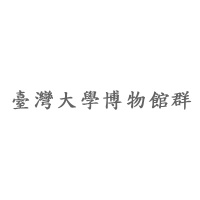
National Taiwan University Museums
The National Taiwan University Museums include the Gallery of NTU History , the Museum of Anthropology , NTU Geo-specimen Cottage , NTU Heritage Hall of Physics , NTU Insect Museum , NTU Agricultural Exhibition Hall, Herbarium of National Taiwan University , NTU Museum of Zoology , NTU Archives , and NTU Museum of Medical Humanities . For almost a century since its establishment, the National Taiwan University has supported the needs for research and teaching, and each department and university unit have collected various precious archival materials, manuscripts, specimen, and collections that are preserved in the specimen/artifact display rooms of the university, making the National Taiwan University Museums the treasure of Taiwan.